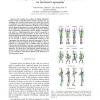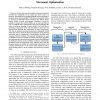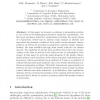331 search results - page 9 / 67 » Robot trajectory optimization using approximate inference |
ICRA
2010
IEEE
13 years 6 months ago
2010
IEEE
— We consider the problem of finding sufficiently simple models of high-dimensional physical systems that are consistent with observed trajectories, and using these models to s...
ICRA
2009
IEEE
14 years 2 months ago
2009
IEEE
— Recent advances in the field of humanoid robotics increase the complexity of the tasks that such robots can perform. This makes it increasingly difficult and inconvenient to ...
ICCSA
2005
Springer
14 years 1 months ago
2005
Springer
In this paper we present a nonlinear programming solution to one of the most challenging problems in trajectory optimization. Unlike most aerospace trajectory optimization problems...
ICRA
2003
IEEE
14 years 27 days ago
2003
IEEE
— In this paper a robotic catching algorithm based on a nonlinear mapping of visual information to the desired trajectory is proposed. The nonlinear mapping is optimized by learn...
DIAGRAMS
2004
Springer
14 years 1 months ago
2004
Springer
Abstract. Isaac is a rule-based visual language for mobile robots using evidential reasoning and a fuzzy inference engine. A prototype inference engine for Isaac has been implement...



